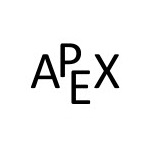2.1.1: Ejercicios 2.1
- Page ID
- 114000
Términos y Conceptos
Ejercicio\(\PageIndex{1}\)
Explicar la diferencia entre la forma punto-pendiente y la forma pendiente-intercepción.
- Responder
-
Las respuestas variarán.
Ejercicio\(\PageIndex{2}\)
Para determinar de manera única una línea, ¿qué información necesita?
- Responder
-
Un punto y una pendiente, o dos puntos
Ejercicio\(\PageIndex{3}\)
¿Cuál es la pendiente de una línea horizontal?
- Responder
-
\(m=0\)
Ejercicio\(\PageIndex{4}\)
Una línea pasa por el punto\((0,6)\). Is this the y-intercept of the line or the x-intercept of the line? Explain.
- Responder
-
Esta es la intercepción y porque\(x=0\) so it is where the line crosses the y-axis.
Ejercicio\(\PageIndex{5}\)
La línea 1 tiene una pendiente de\(m_1=2\). If line 2 is parallel to line 1, what is \(m_2\)?
- Responder
-
\(m_2=2\)
Ejercicio\(\PageIndex{6}\)
La línea 1 tiene una pendiente de\(m_1=-4\). If line 2 is perpendicular to line 1, what is \(m_2\)?
- Responder
-
\(m_2=\frac{1}{4}\)
Problemas
En ejercicios\(\PageIndex{7}\) -\(\PageIndex{16}\), escriba una ecuación para cada línea en la forma indicada.
Ejercicio\(\PageIndex{7}\)
Escribe la ecuación en forma de punto-pendiente para la línea que pasa a través\((1,2)\) and is parallel to the line \(2x+y=5\).
- Responder
-
\(y-2=-2(x-1)\)
Ejercicio\(\PageIndex{8}\)
Escribir la ecuación de la línea en forma de pendiente-intercepción pasando por los puntos\((1,2)\) and \((-1,4)\).
- Responder
-
\(y=-x+3\)
Ejercicio\(\PageIndex{9}\)
Escribe la ecuación en forma de punto-pendiente para la línea que pasa a través\((0,4)\) and is perpendicular to the line \(x-2y=6\).
- Responder
-
\(y-4=-2(x-0)\)
Ejercicio\(\PageIndex{10}\)
Escribir la ecuación de la línea en forma de pendiente-intercepción pasando por los puntos\((-1,0)\) and \((3,6)\).
- Responder
-
\(y=\frac{3}{2}x + \frac{3}{2}\)
Ejercicio\(\PageIndex{11}\)
Escribir la ecuación de la línea en forma de pendiente-intercepción pasando por los puntos\((-2,1)\) and \((2,7)\).
- Responder
-
\(y=\frac{3}{2}x + 4\)
Ejercicio\(\PageIndex{12}\)
Considere la función lineal\(f(x)=2x-8\). What is the value of the function when \(x=0.1\)?
- Responder
-
\(-7.8\)
Ejercicio\(\PageIndex{13}\)
Escribe la ecuación en forma de pendiente-intercepción para la línea que pasa a través\((-2,2)\) and is perpendicular to the line \(x+3y=8\).
- Responder
-
\(y=3x+8\)
Ejercicio\(\PageIndex{14}\)
Escribir la ecuación en forma de punto-pendiente de la línea que pasa por los puntos\((3,6)\) and \((7,4)\).
- Responder
-
\(y-4=\frac{1}{2}(x-7)\), or \(y-6=-\frac{1}{2}(x-3)\)
Ejercicio\(\PageIndex{15}\)
Escribe la ecuación de la línea que pasa por los puntos\((-4,4)\) and \((0,-4)\) in slope-intercept form.
- Responder
-
\(y=-2x-4\)
Ejercicio\(\PageIndex{16}\)
Escribe la ecuación de la línea paralela a\(y=6x+4\) that has a y-intercept of \(2\) in point-slope form.
- Responder
-
\(y-2=6(x-0)\)
En ejercicios\(\PageIndex{17}\) -\(\PageIndex{20}\), responda a cada pregunta sobre las propiedades de la (s) línea (s) dada (s).
Ejercicio\(\PageIndex{17}\)
Considere la función lineal\(g(x)=-4x+5\). What is the slope of the function when \(x=4\)?
- Responder
-
\(m=-4\)
Ejercicio\(\PageIndex{18}\)
Determinar la intercepción x de la línea\(y=4x-8\).
- Responder
-
\((2,0)\)
Ejercicio\(\PageIndex{19}\)
Determinar la intercepción y de la línea\(y=4x-8\).
- Responder
-
\((0,-8)\)
Ejercicio\(\PageIndex{20}\)
Qué línea tiene una pendiente más pronunciada:\(y=5x+10\) or the line passing through the points \((-5,0)\) and \((0,11)\)?
- Responder
-
La línea\(y=5x+10\) has a steeper slope.


